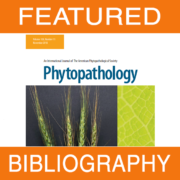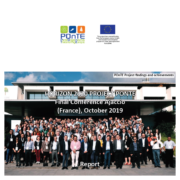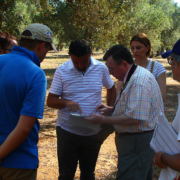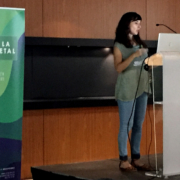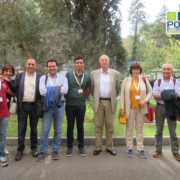Xylella fastidiosa in olive in Apulia: where we stand
Phytopathology. 2018 Oct 30. doi: 10.1094/PHYTO-08-18-0319-FI. [Epub ahead of print]
Authors
Saponari M1, Giampetruzzi A2, Loconsole G3, Boscia D4, Saldarelli P5.
Affiliations
1. Consiglio Nazionale delle Ricerche, Istituto per la Protezione Sostenibile delle Piante, Sede Secondaria di Bari, Bari, Italy
2. Università degli Studi di Bari, Dipartimento di Scienze del Suolo, della Pianta e degli Alimenti, Bari, Italy
Abstract
A dramatic outbreak of Xylella fastidiosa decimating olive was discovered in 2013 in Apulia, Southern Italy. This pathogen is a quarantine bacterium in the European Union (EU) and created unprecedented turmoil for the local economy and posed critical challenges for its management. As a new emerging threat to susceptible crops in the EU, efforts were devoted to gain basic knowledge on the pathogen biology, host and environmental interactions (e.g. bacterial strain(s) and pathogenicity, hosts, vector(s), and fundamental drivers of its epidemics) in order to find means to control or mitigate the impacts of the infections. Field surveys, greenhouse tests and laboratory analyses proved that a single bacterial introduction occurred in the area, and a single genotype, belonging to the subspecies pauca, was found associated with the epidemic. Infections caused by isolates of this genotype, turned to be extremely aggressive on the local olive cultivars causing a new disease, termed Olive Quick Decline Syndrome. Due to the initial extension of the foci and the rapid spread of the infections, eradication measures (i.e. pathogen elimination from the area) were soon replaced by containment measures including intense border surveys in the contaminated area, removal of infected trees and mandatory vector control. However, implementation of containment measures encountered serious difficulties, including public reluctance to accept control measures, poor stakeholder cooperation, misinformation from some media outlets, and lack of robust responses by some governmental authorities. This scenario delayed and limited containment efforts and allowed the bacterium to continue its rapid dissemination over more areas in the region, as shown by the continuous expansion of the official borders of the infected area. At the research level, the European Commission and regional authorities are now supporting several programs aimed to find effective methods to mitigate and contain the impact of X. fastidiosa on olives, the predominant host affected in this epidemic. Preliminary evidence of the presence of some resistance traits in some olive cultivars represents a promising approach currently under investigation for long-term management strategies. The present review describes the current status of the epidemic and major research achievements since 2013.
Published on October 30, 2018 by PHYTOPATHOLOGY

